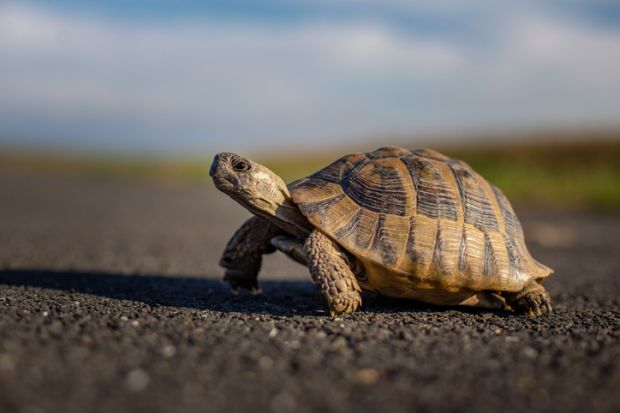Getting promoted to professor within a decade of first being published is very rare even among top-rated scientists, according to researchers who have warned that protracted PhDs and lengthy postdoctoral stints are holding back even the best scientists from “achieving independence and tenure”.
John Ioannidis of Stanford University’s Meta-Research Innovation Centre at Stanford (METRICs) and colleagues used the Scopus database of 5.8 million authors to evaluate the gender gap in science publishing by looking at the top 2 per cent of most-cited authors for each of 174 science subfields.
The findings, published in the open-access journal Plos Biology, suggest that the gender gap is closing – as men outnumbered women by 3.9 times among authors who started publishing before 1992, but by only 1.4 times among those after 2011.
However, in-depth assessment of random samples of 100 women and 100 men from this youngest group shows that most were working in academic environments by 2023, but just two women and two men had been promoted to full professor.
The paper argues that both gender imbalances and slow promotion pathways for the most gifted scientists, regardless of gender, need to be improved.
Professor Ioannidis told Times Higher Education that drawn-out PhDs and a series of lengthy postdoctoral positions, which previously were not required, are now becoming the norm.
Campus resource: How to help postdocs take a holistic look at career choices
“I think that there are very few opportunities for even the most talented young scientists to advance on a fast track,” he added. “Most academic systems are very slow and bureaucratic, even asking for a minimum number of years to be spent in each rank.
“The system is holding back even the best scientists from achieving independence and tenure.”
He said universities should have more flexible rules that allow them to promote people quicker if they prove to be “really outstanding in their early steps”.
He continued: “Also, funding should shift to younger scientists, because in many institutions, promotion is linked to funding. Ideally, this means having more funding for science overall.
“If, sadly, this is not possible, at a minimum some more funding should shift from older scientists to younger scientists.”
Professor Ioannidis said that while the research showed substantial shrinkage over time of the inequalities between men and women in the top echelons of scientific citation impact, there was “substantial room” for improvements in most fields.
In the youngest group, 32 of the 174 fields of science (18 per cent) had at least as many women as men, or even more women than men, within the category of top-cited authors.
When limited to the authors with the highest impact, men outnumbered women by 3.2 times among top-cited authors – varying between 6.4 times in the senior groups to 2.3 times in the youngest cohort.
The researchers also found that gender imbalances in author numbers decreased sharply over time across countries of all income levels, but low-income areas had little improvement in gender imbalances for top-cited authors.





